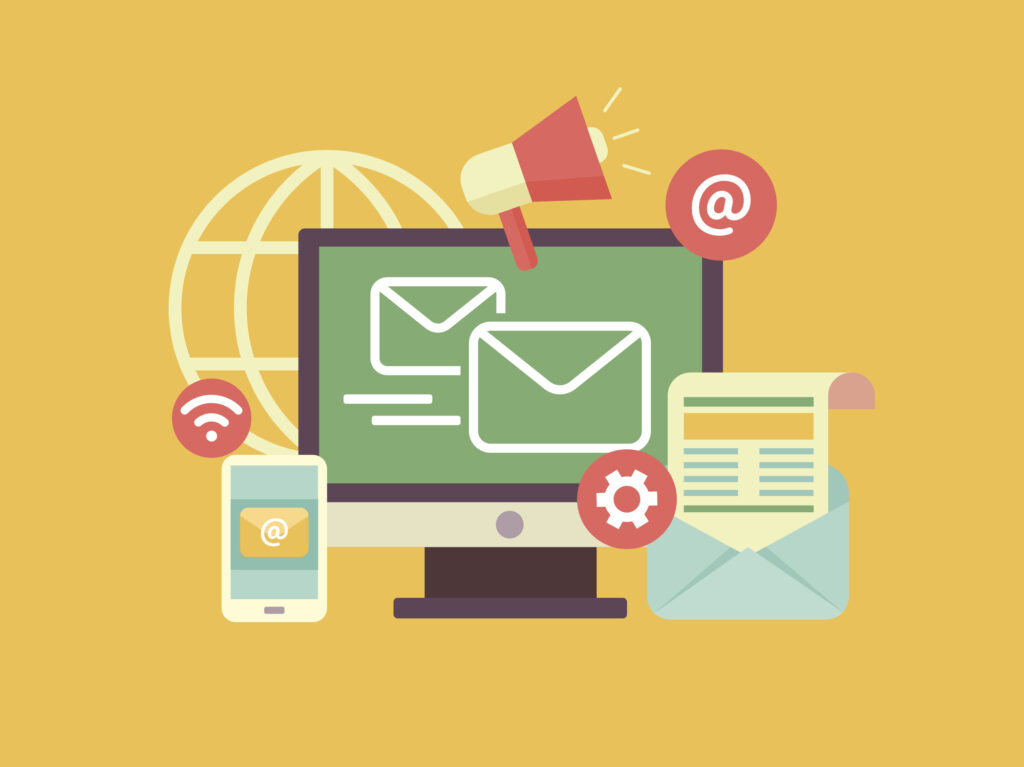
How to Build Successful E Email Marketing Campaigns
Email marketing is considered one of the most effective and lowest-cost tools in a marketer’s arsenal. With an average ROI of $42 for every dollar spent, it’s little wonder why big and small businesses alike have jumped to email marketing to drive sales, nurture leads, and build customer loyalty. It’s more than just a newsletter email that goes out to a mass list of people; creating a really effective email marketing campaign calls for strategy, planning, and continuous optimization for the best result.
In this article, we will break down the process of creating successful email marketing campaigns-from list building and segmentation to compelling content and campaign analysis. You’ll understand how to plan, execute, and optimize your email marketing by the end of this article.
Table of Contents
- Understanding the Power of Email Marketing
- Building an Effective Email List
- How to Build and Grow Your Email List
- Best Practices for Managing Your Email List
- Audience Segmentation
Why Segment?
Different Methods of Segmentation - Creating Captivating Email Content
Writing Grabby Subject Lines
Personalization and Dynamic Content
Designing for User Experience - Email Marketing Automation
Email Automation Introduction
Setting Up Email Workflows
Excellent Examples of Email Automations - An Electronic Mail Marketing Platform Selection
- Best Practices on Optimizing Email Campaigns for Better Performance
A/B Testing
Email Metrics - Legal Issues and Deliverability Best Practice
- The Future for Email Marketing
- Conclusion
END
1. Understanding the Power of Email Marketing
Before delving into the mechanics of an email marketing campaign, it’s helpful to understand why email marketing is such a potent tool. Here are a few important reasons why email marketing works well:
- Direct Reach: In short, email marketing allows you to reach the inbox of your target audience directly-not through your social media page or paid ad. This lends an element of control that is difficult to be achieved with any other form of marketing.
\ - High ROI: As earlier mentioned, high ROI is one feature of email marketing. This is due to its very low cost, more so when compared with paid advertisements or direct mailers.
- Personalization: Email offers high personalization. Whether it is addressing the customer by their first name or tailoring the content of the email based on their behavior or sending them relevant offers based on what they purchased earlier, email is a very strong medium for personalizing.
- Measurable: With the tools and platforms available to track key metrics (such as open rates, click-through rates, conversion rates, etc.), email marketers can easily evaluate where their campaigns are at and optimize for stronger performance.
Building a Solid Email List.
Quality constitutes the foundation of any successful email marketing campaign; otherwise, the audience just does not exist. If you do not have an audience, no effort matters. However, it is not just in collecting as many emails as possible but more so in accumulating interested people for your content and offers.
How to Create and Grow Your Email List
- Give Incentives: Providing an incentive to get the email address has been very common and is the most used tactic to create an e-mail list: this might be an eBook free, a discount, exclusive content or access to a webinar.
Use your website : Pop up a sign-up form in a really prominent area of your website. This may be through a pop-up or sticky bar or you may build a dedicated landing page to have the form on there. Ensure sign-up is about as easy as possible. - Host contests or host a giveaway. Running a contest or a giveaway is a brilliant way to get people to sign up for your email. Promote your contest or giveaway on all your social media and on your website.
- Social Media: Post your email sign-up form throughout your social media channels. Since your followers are already interested in your brand, they might be a bit more willing to become part of your email list.
- Referral Programs: Encourage your subscribers to refer their friends or colleagues to join the list. This could potentially attract more people to your mailing list but can easily develop into a successful mailing list rapidly within people who are connected to your brand.
Best Practices to Manage Email Lists
- Double Opt-In: In order to make sure that the subscribers you have are those who actually need to receive your emails, ensure that you employ a double opt-in process. This entails sending out a confirmation e-mail to the subscriber right after they sign up, asking for their confirmation of subscription.
- Clean Your List Periodically: Passive subscribers slowly degrade your email list over time. Clean your list by sending out inactive email subscribers, either remove them or reengage them. This will increase deliverability and engagement rates.
- Subscription Management Page: It makes it easier for subscribers to unsubscribe or change their preferences on your part. It also respects their preferences as well as keeps your list clean.
3. Segmentation of Your Audience
Email list segmenting refers to splitting up the list into relevantly targeted sub-groups, whose targets are usually based on a variety of criteria. It is this that will assure each person in the email list will receive the most targeted information that contributes to higher open and click-through rates.
Why Segmentation Matters
The segmented email will have higher open and click-through rates because the content is much more targeted to the individual recipient.
- Higher Engagement: With targeted and relevant messages, you create greater engagement among your audience. When the customer feels that the email communicates to them directly, then they react towards it.
- Conversion Rates: Conversion rates are always higher in case of targeted emails, especially when they appear relevant to a customer’s behavior or preferences, leading to chances of sale or some other conversion event, ultimately enhancing the ROI.
Types of Segmentation
- Demographic Segmentation: Here, one has to differentiate on the basis of age, gender, location, occupation, etc. It varies according to demand and is comparative in nature. For example, you would send different content to male and female subscribers or give location-based deals.
- Behavioral Segmentation: Here, you have to categorize the audience based on how they are interacting with your brand. For example, you can segment users who have abandoned their shopping cart or users who have purchased a specific product.
- Interaction-Based Segmentation: Segment subscribers according to how often they will open your emails, forward the emails, or click on links within those emails. You could also send re-engagement campaigns to inactive subscribers or send special offers to super-engaged users.
- Lifecycle Stage Segmentation: You can also segment as people move along their buyer’s journey, that is, as they become new subscriber, lead, customer, or repeat buyer, to send relevant emails based on that stage.
- Value-based Customer Segmentation: Those customers who have done repeat purchases or spent massively at your brand should receive the VIP treatment-whether exclusive content or special offers.
4. Composition of Compelling Email Content
Now that you have the above list segmented, the next step is composing content targeted to them. Let’s face it. Your email content will either engage your audience or bore them; thus, get it right.
Crafting Grabbing Subject Lines
The subject line is what an recipient will see first, and that’s going to greatly determine whether they open your email or not. Here are tips for crafting strong subject lines:
- Keep It Short: In subject lines, be around 40-50 characters long so they don’t get cut off on mobile.
Create Curiosity: Being curious in the subject line may provoke more opens: make recipients want to know more through phrases like “You won’t believe this…” or “Your exclusive offer inside.” - Personalization: Using the name of the recipient or some reference to the recipient’s past behavior makes for a more personal and applicable email.
- Action-Oriented Language: You should encourage the recipients to act with verbs such as “Get,” “Claim,” “Save,” or “Learn.”
- Test Different Subject Lines: A/B test subject lines to determine what’s most relevant to your audience.
Personalization and Dynamic Content
Personalization is more than using the recipient’s name in a subject line. Using dynamic content, you can make your email’s content dependent on subscriber preferences, behaviors, or demographics.
Example:
Recommend products based on purchases by that person or others with similar profiles.
Send targeted offers based on their history of browsing on your website.
- Personalize them with content or tips based on interest.
Design for User Experience
Your email should look pretty, but more importantly, it should be readable and convertable. Some design tips to improve user experience are as follows:
- Mobile Responsive: Over half of all emails open on a mobile, so your email needs to be mobile-responsive. Ensure that you have a responsive email that can easily adapt to any screen size, and your links and buttons will be easily tappable.
- Call-to-Action Buttons: Ensure that the call-to-action buttons are clearly visible and clickable. Use action-oriented texts for your buttons, such as “Shop Now” and “Download the Guide.”
It is pretty easy to make sure it’s free of too much wordiness or not so many images. Limit the design of the email into a clean and minimalistic aesthetic, making the most important elements stand out.
- Fonts are Readable and Large Enough: This means using large enough fonts, readable and having enough contrast between text and background.
5. Email Marketing Automation
Email marketing automation is, without question, one of the most potent features that modern email platforms have to offer. This feature lets you prepare a chain of pre-scheduled emails that may be activated for different activities or periods of time.
What Is Email Automation?
Email automation lets you send messages at the right time to the right people without even needing you to hit send for each one. Suppose when someone subscribes to your email list you have an automated welcome email that goes out to that subscriber, then onboarding emails in succession.
Email Workflows
An email workflow is an automated sequence of emails that are triggered by certain actions a user performs, like subscriptions or purchases.
